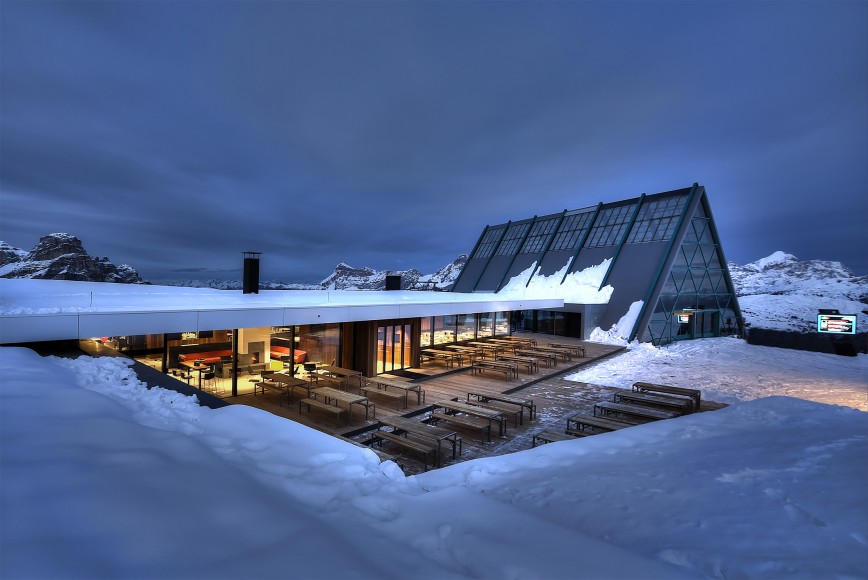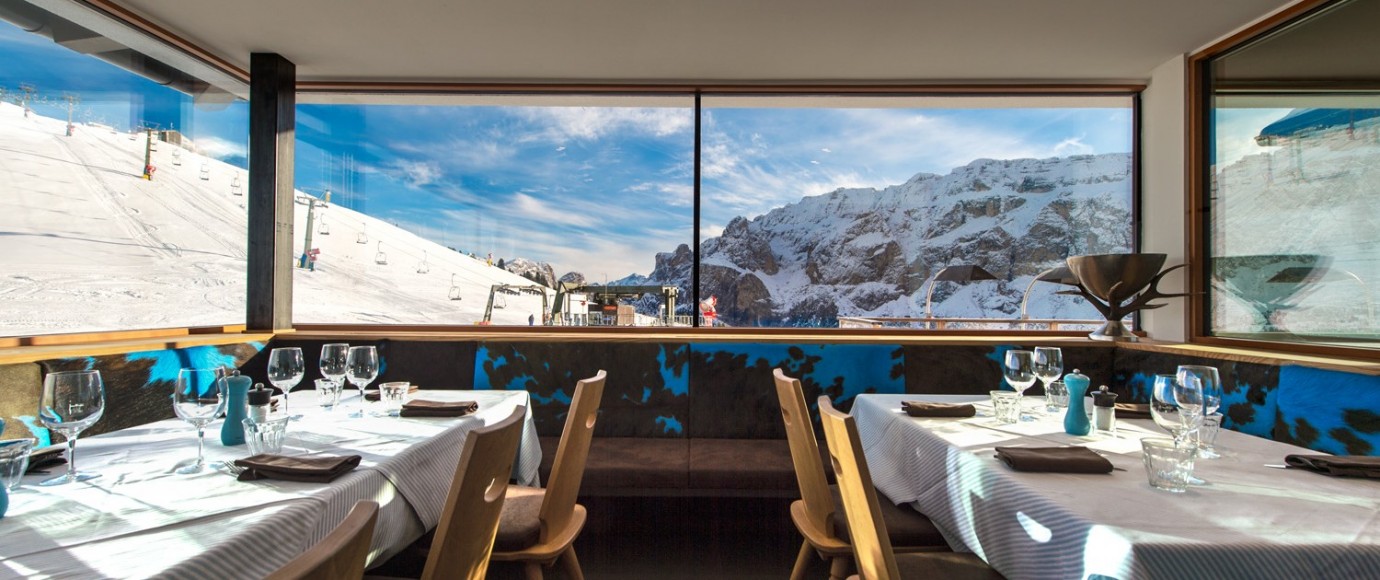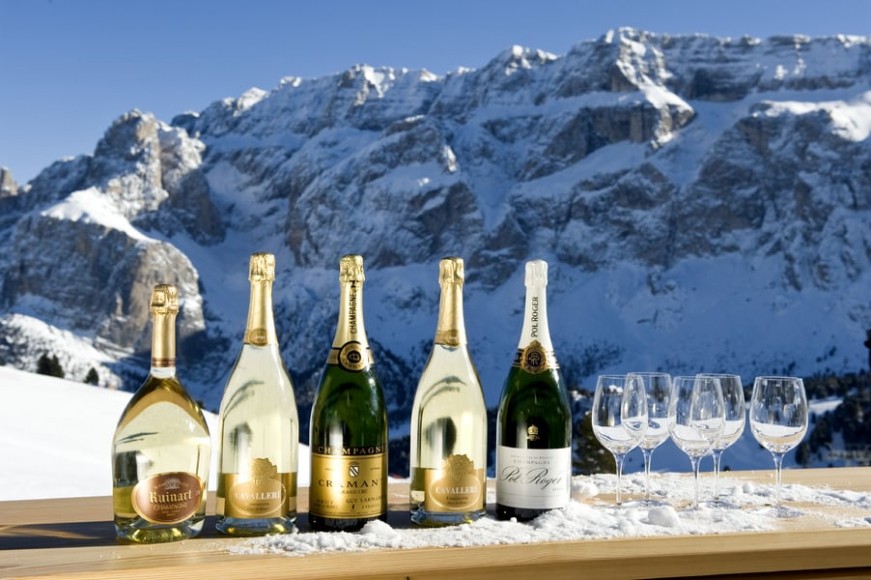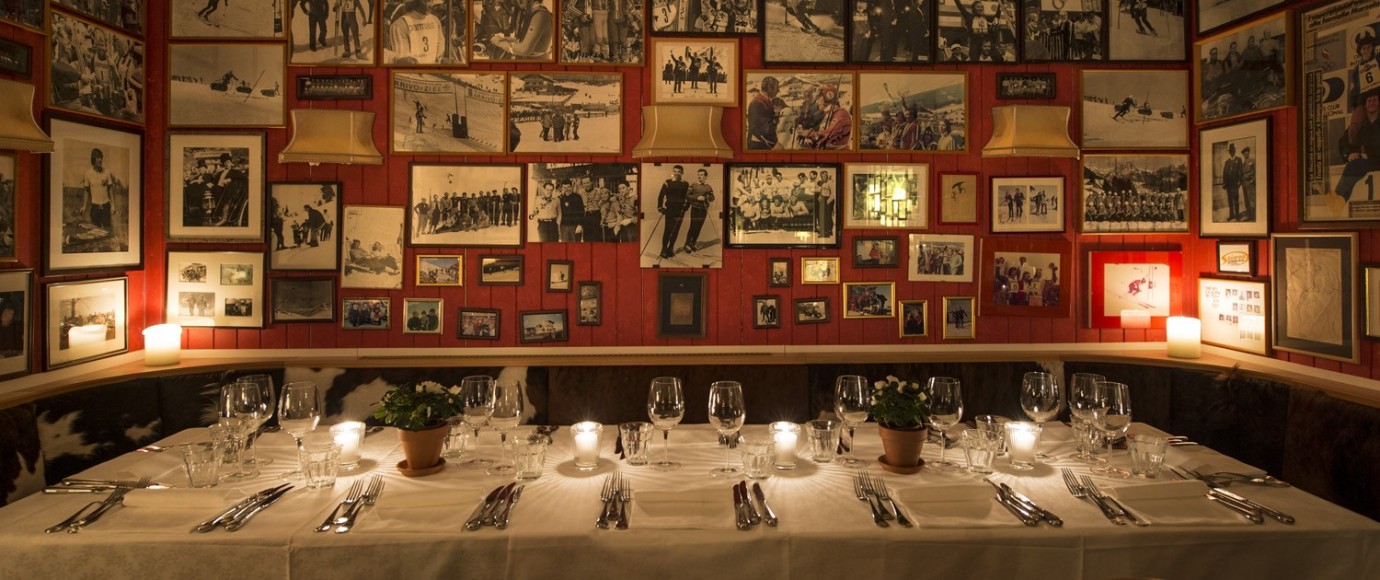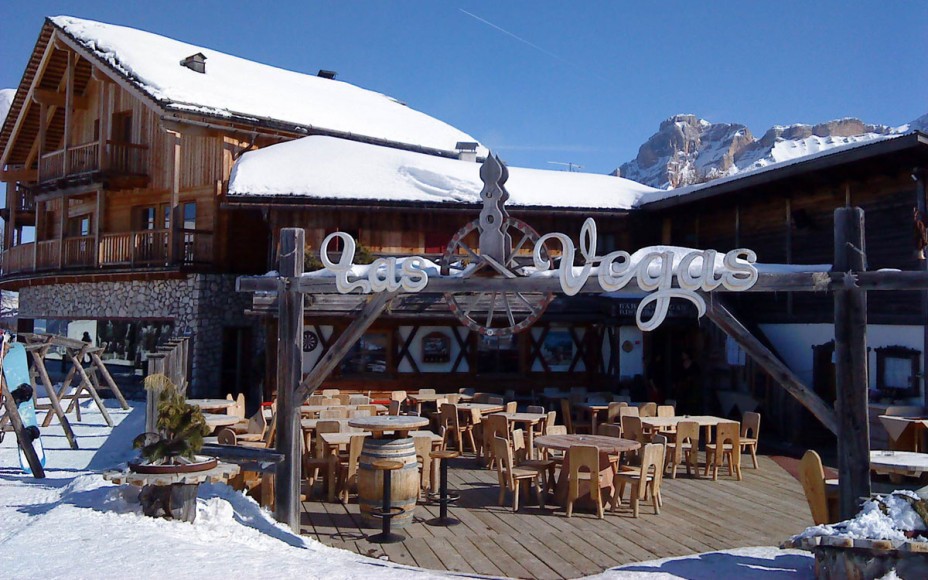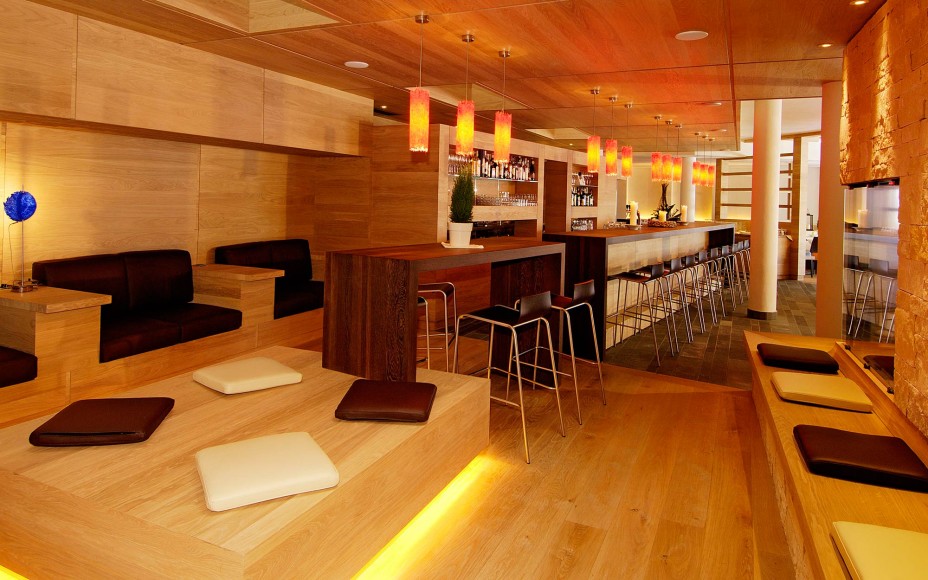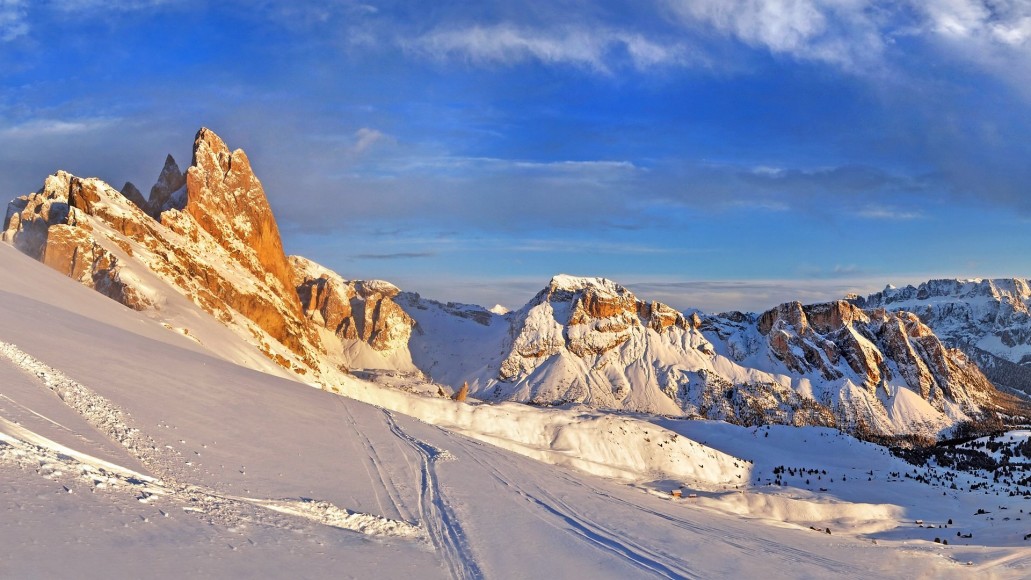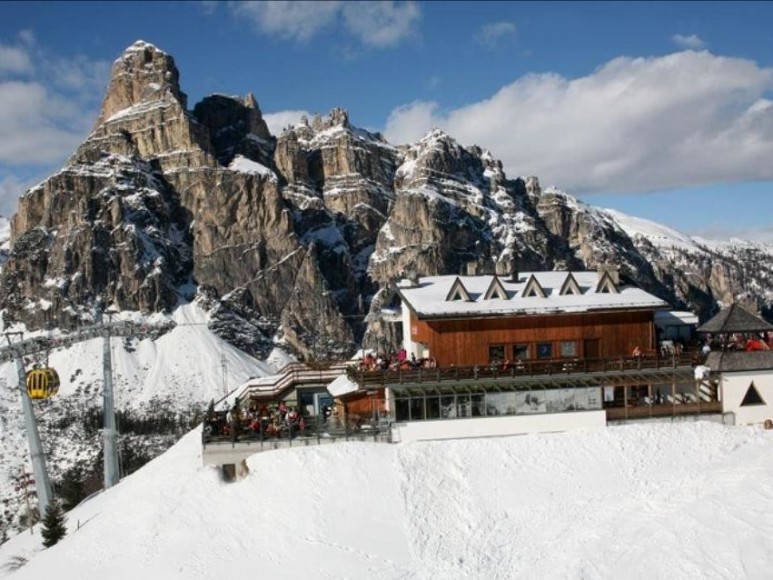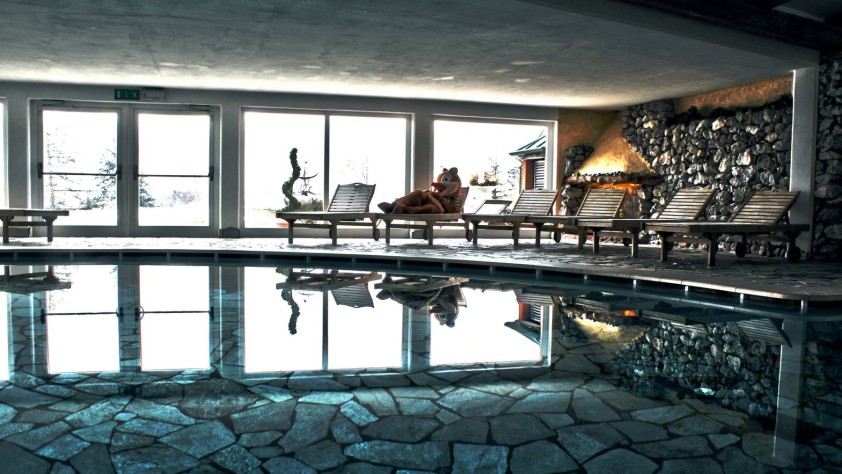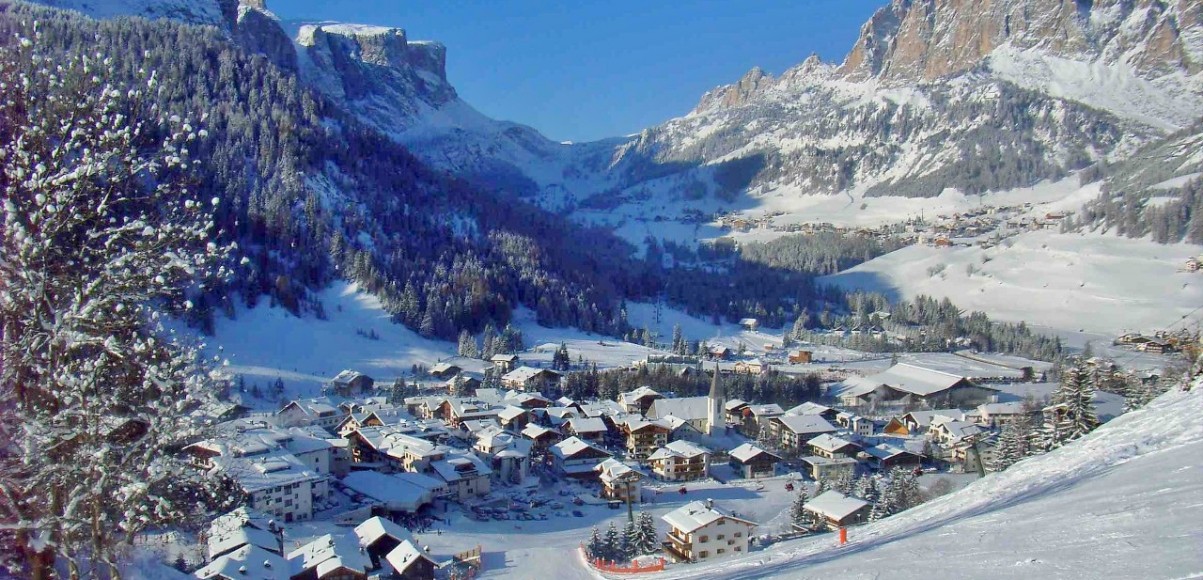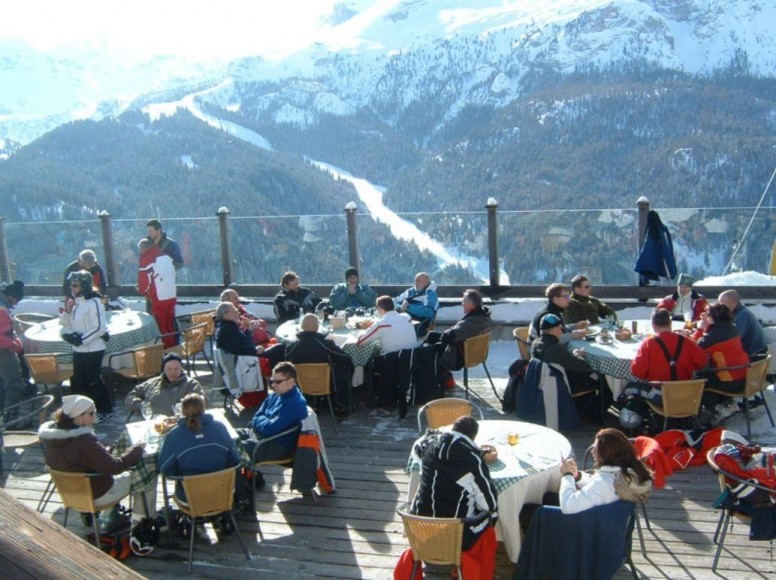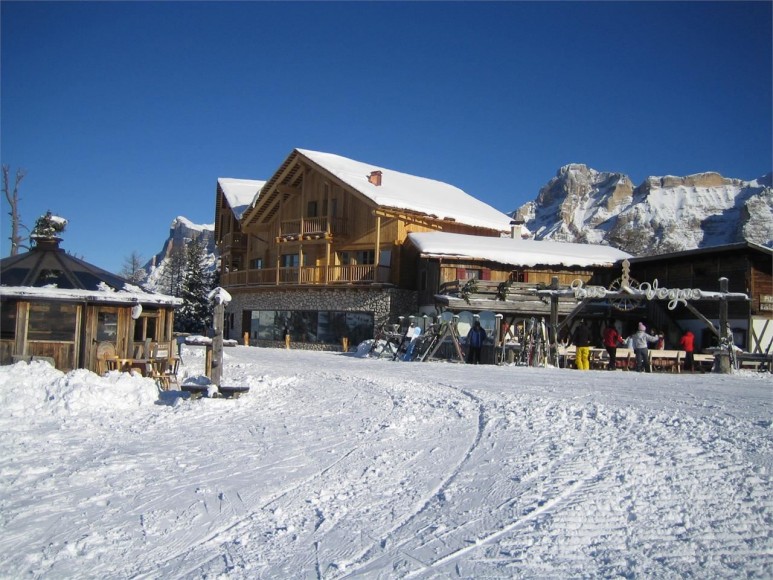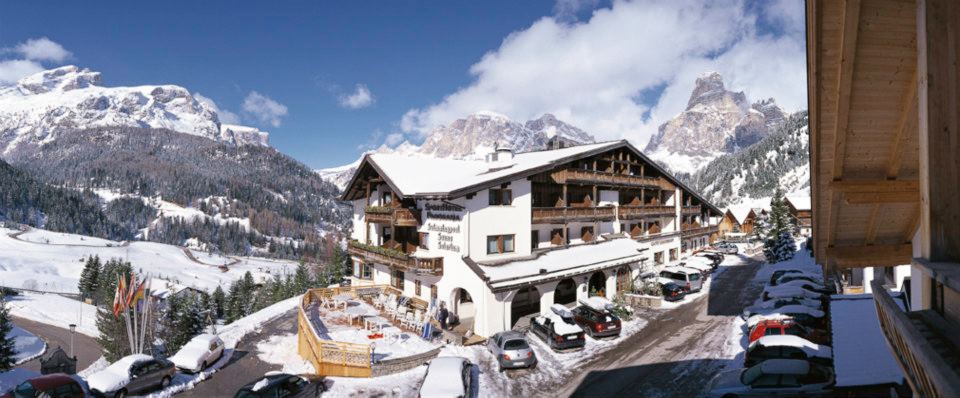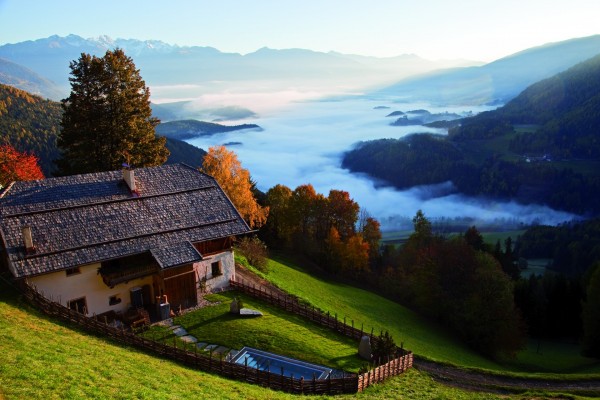As the temperature plummets and the frost sits longer, I often stare out my window in the morning, coffee in hand, and think about all the times I’ve woken up surrounded by freshly fallen snow in Alpine escapes. Winter is a calling for some of us; a return to the pistes of Europe and beyond; a time to get back to nature, to reconnect with the mountains in a way only those who chase the snow will understand. I still have many things to tick off on my alpine bucket list – the Cresta Run, Japanese powder, and the unbound wilds of Canada – but one trip remains at the top, one that would take ample time and need careful planning to really appreciate it to the fullest: the Sellaronda. Every year, I take a step closer to it, researching restaurants and hotels in different regions. This year it would be Corvara in the beautiful Alta Badia region in the Dolomites of northern Italy with the team at Crystal Ski.
We arrived at Innsbruck excited and well-packed for a weekend in the mountains. During the winter season, EasyJet flights become rather convivial, full of middleclass types who are all too willing to commit themselves to a cheap flight to save the pennies. This makes EasyJet a more EasyJetSet affair around the ski season. Innsbruck airport is still one of my favourites, given the lighting pace you can sweep through customs and collect your luggage. I’m sure the process takes less than ten minutes – T5 take note.
However, it all became a little trickier when we were unable to find our driver. I’m always of the impression that if you are meeting a guest at an airport, the onus is on the driver to park the car, write your name on a sign and find you. Take note of the flight number and the guest’s name, be there on time. Hardly complex, but human error is always there to remind us that even the best-laid plans of mice and men can go awry. After an email, two calls and a small coffee, we met our driver, gesticulating like a true Italian with a few broken lines of English. “Smile and get in the car, dear,” I said to Florean, my other half.
Corvara is a short two-hour hop from Innsbruck by car and sits at 1568m at the foot of the Sassongher mountain massif in the Dolomites. I couldn’t tell you anything about the drive, that’s how short it was.
We pulled up to the Sport Hotel later than afternoon. It’s a friendly, family-run hotel with traditional alpine charm and panoramic views towards the mountains. To be brutally honest, our room was lacking a little in terms of space and modern conveniences, but when faced with less-than-luxurious accommodation, remember you are there to be on-piste, not tucked up in Egyptian cotton. That isn’t to say that the hotel doesn’t have other more spacious rooms, but I’m probably just too British to complain. I always feel that requesting a different room is something reserved for spoilt people who are acting above their station.
As the afternoon pressed on and the snow fell across the region obscuring much of the town below, it was time to start the intake of carbs that would allow me to counterbalance myself on my first few runs of the trip.
We ascended the Boè cable-car up to the Piz Boè Alpine Lounge. The property is regarded as a great starting location for a clockwise tour of the Sellaronda – and by god, what a location it is. The Panoramic restaurant overlooks the mountains giving off bright pink hues and contrasting purple splashes at sunset. Sadly, some rather bad weather had started to move in, but luckily the food was some of the best I have ever sampled in the Dolomites, so my view of each course sailing out of the kitchen was enough. The region takes its food as seriously as it takes its skiing – so loosen that belt. I had the pleasure of sampling the delights of Norbert Niederkofler and his three Michelin stars a few years ago, which is what opened my eyes to the gastronomic delights of the region. The culinary season officially starts in December with the Gourmet Ski Safari, where fabulous dishes created by Michelin starred chefs from the region are served in key alpine locations.
Today’s menu was a speck and cheese selection from local farms. Rabbit tartare with mashed poire in point noir and hemp bread to start. For the soups: black polenta cream with graukas croutons; and beef broth with boiled veal cutlet, vegetables and pastina.
Next was dry tomato salvia risotto with sliced smoked brook trout. Buckwheat dumplings soused with caprine gorgonzola. Ravioli filled with knuckle of veal soused with chervil sauce. Followed by lamb gröstel with vegetables, ox fillet with hay crust and speck potatoes. Loin of suckling pig, vegetable sticks, and a baked potato.
To say the menu was divine would be an understatement. This was my type of food: unadulterated, rich, full-bodied, and abundant. Washed down with a delightful Barthenau Vigna S Urbano.
In hindsight, with this much food and a little grappa on board, attempting the ski down with Veronika from the tourist board was probably not my finest run ever. But as the fog cleared and the snow dusted trees appears in the distance, it was absolutely worth it. We stowed our boots in the cavernous boot room of the Sports Hotel and managed to get a few brief hours of sleep before our next mountain ascension.
After a short hop by car to the west and we were at the foot of the Langkofel about to ascend on the gondola. The enthusiastic hosts from the renowned Comici Hut fed us hot cider and issued us with guest bands. I couldn’t help but think, if you manage to hike or shin up to 2140m to gatecrash, it deserves free entry. A gondola and snow-cat later, as the heavy snow began to clear, a haze of lights came out of the distance. I had expected a quiet and rather sleepy traditional alpine lodge, but the Rifugio Emilio Comici was so much more. The property is the namesake of avid mountaineer Emilio Comici who devoted his life to the pursuit of alpinism and climbing in his beloved Dolomites. Built in 1955 at the foot of the Langkofel, the hut now blends traditional mountain charm with a rather modern soundtrack. The place has bags of personality and as a family run business, it still feels incredibly close knit. The walls are adorned with more photos of VIPs in attendance than a UK trade conference. The hut runs a series of late night parties throughout the winter months guaranteed to be a riot regardless of the theme.
After dinner, the restaurant turned into an impromptu dance floor playing some not-so-latest tracks and traditional Italian favourites. I have no doubt that this party could have gone all night. However, I was just about drunk enough on good Italian red to attempt a hike up the piste with a children’s sled. I started a bit of a following too, but not before the powers-that-be vetoed the questionable practise of sending drunk people off into the blizzard.
The following morning, we were up at 7am for a spot of yoga and breakfast of champions: carrots. I too was somewhat puzzled to see a large serving dish filled with raw carrots at breakfast that morning. I can only assume they would be juiced in some way. I was much more at home with poached eggs and toast.
The sun was slowly rising behind the hotel, revealing a blue bird day in the Dolomites from the balcony of the Sporthotel. The resort itself benefits from being next to a lift, which means the property, despite being quite low, is ski-in, ski-out. Florean would spend the morning with an instructor, blowing out the cobwebs and relearning to ski, whilst I roamed the pistes in search of the perfect hot chocolate. As part of the Dolomiti superski area, you’ll have access to 978km of downhill skiing, 668 individual pistes served by 573 lifts. Corvara itself has 130km of pisted runs and, being above 1500m, you can usually always ski or board back to the resort. I always forget how dreamlike the Dolomites are. The pink mountains and treelined runs are really rather spectacular, with clear skies in abundance.
After four hours of chasing the Armani-clad tourist-board team around the pistes, I was about ready for a feast. Unless you actually train for the winter season, by lunch time, most people are in need of a serious protein fix and alcoholic alleviation (medicinal purposes, of course). The Col Alt Hut in Corvara is traditional through to its bones. Built at the first ski lift station in Italy in 1946, the restaurant really blends into the mountain. The Col Alt Hut is part of the gastronomic ‘A Taste for Skiing’ festival which sees around 13 award winning chefs create their favourite childhood dishes which then become available at specific mountain huts in the region. Chef Nicola Laera from the Restaurant La Stüa de Michil c/o Hotel La Perla , prepared Roast Bleggio rabbit with its livers, pumpkin, chestnuts and sauris ham powder.
My grandmother and mother have always been big fans of rabbit. Whether in a pie, in pasta, or simply served as an accompaniment to Sunday lunch, rabbit is the norm for my family. I can’t say I’ve ever had it properly conceptualised into a dish by a Michelin-starred chef, though. Served with the Alto Adige Pinot Grigio, it was a triumph. I know only a few people that don’t adore Italian food, and my god this was certainly Italian cuisine at its absolute finest. With a hearty meal on board and perhaps a glass too much wine, my descent back into Corvara was only kept in check by the need to keep Florian at a gentle pace. Luckily, we spotted the hotel before flying past it, and were able to ski (almost) into the boot room.
After a long day skiing, I like nothing more than propping myself up at the bar for a decent apres opportunity. The bar at the Sporthotel was formidable. Some 40-feet of curved wood, horseshoe-shaped, with seats so comfortable you would be forgiven for falling asleep. Add this to the view from the ground level balcony and it truly was a beautiful property. No property in the mountains would of course be complete without a spa. And of course, the hotel has a solarium, tepidarium, indoor pool, relaxation room, and is able to offer a range of treatments. I did spot some outdoor hot-tubs at one point too.
The following morning, another early start, would see us head up to the Las Vegas lodge above San Cassiano via their private snow-cat, just in time to watch the sunrise. I forget the morning nip you feel when ascending the piste at first light, only to be rewarded with the warm sun slowly hitting your face as it rises up above the neighbouring mountain ranges.
Las Vegas is a party lodge, serious restaurant and hotel offering a quirky trifecta of options to those wishing to take advantage of its prime position on piste. Ulli Crattolave took over the property in 2005 and built the lodge to redefine the idea of a high-altitude refuge. Rather than being traditional, the property has a design that blends modern architecture with natural tones and materials. The view is unparalleled.
With only a few hours left to enjoy another blue-bird day, and with a transfer looming, there was little else to do but ski a few last runs around the San Cassiano area, taking in the sunshine and the majestic mountains. It does go to show though that it is entirely possible to spend a weekend in the mountains and ski as much as socialise. Ultimately, my research into the Sellaronda is far from complete, having only really taken in one of the four areas on the route. I am spellbound by the Dolomite region, though – not least because I’m usually one of the very few Brits on piste. This might seem like a small thing, but it’s a testament that the region still retains its rustic charm and traditions; that it hasn’t strayed into the mass market ski arena trying to be all things to all people, in an effort to please transient Russian and Chinese clients. I, for one, could happily return year-on-year to the Dolomite region, and maybe one day I’ll touchdown for long enough to make my way the whole way around, loosening the belt to my Armani salopettes as I go.
www.crystalski.co.uk
020 8939 0726
www.altabadia.org
+39 0471 847037

